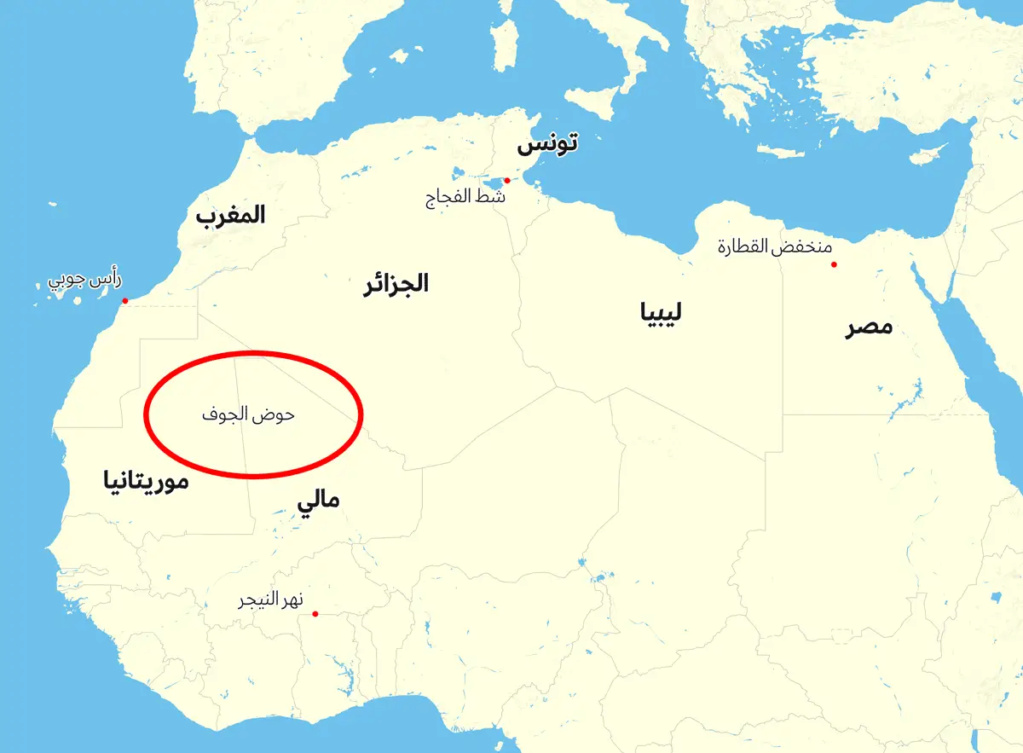The Desert Sea is a project that aims to create an inland sea in the depths of the Sahara desert

The “Sea of the Desert” refers to a proposed project to flood the dry basins of the Sahara desert with water from the Atlantic Ocean and the Mediterranean Sea. The main idea behind this project was that this man-made sea would make the surrounding climate more conducive to supporting agricultural projects.
Supporters of this inland sea believed that it would raise the humidity of the surrounding atmosphere, making it rain more, and the idea of a Saharan African sea was particularly popular between the late nineteenth and early twentieth centuries.
Evolution of the Sahara Sea Concept:
Donald Mackenzie, a British engineer, was the first to propose the idea of the Sahara Sea in 1877, as he wanted to transform the “Jouf Basin” into an inland desert sea. This basin extends along northeastern Mauritania and northwestern Mali and is located at an altitude of 200 meters below sea level.
McKenzie's plan included digging a canal to direct water from the Cape Gobi region in Morocco to the basin, creating an “inland” sea covering an area of 155,000 square kilometers. This original Saharan sea idea initially also included an additional canal extending from the inland sea to “ Niger River,” and geologists believe that the “Jawf Basin” was at one time connected to the Atlantic Ocean.

In the year following Mackenzie's proposal, the engineers (François-Elie Rodard) and (Ferdinand de Lesseps) proposed a similar idea to be implemented in Shatt al-Fajjaj in Tunisia. According to their scheme, the basin was to be filled with the waters of the Mediterranean Sea through a channel extending from the Gulf of Gabes.
This project would have cost the treasury about 30 million dollars, and the opponents of the establishment of a project like this argued that the benefits of this inland sea would be few and not much affecting the climate of the region, in contrast to its harms that would be great, as in their view it would create a swampy climate, which would house insects. pestilence and epidemics.
The French government, which was occupying Tunisia at the time, sent observers and experts to the region in order to study and evaluate the project. And those who discovered that the basin was not actually below sea level, and from that the project failed and funding was cut off from it.

The idea of establishing an internal sea deep in the Sahara desert died for a period of time until it reappeared in the year 1910 when Ichigoyan, a French professor, again proposed the establishment of an internal sea. In his plan, the canal was designed to be deeper and longer, and (Echigoyan) suggested that it would be very useful to the French colonial endeavors, but the French government again refused to finance such a project.
Then came the "Operation Bluchart" project, an American initiative to use nuclear bombs in peaceful endeavors, to propose the use of nuclear bombs to fill the "Qattara Depression" in Egypt with water. I also suggested flooding the shores of Tunisia with the waters of the Mediterranean Sea, and before the project could be completed, Several international treaties were signed stipulating that nuclear bombs should not be used in peaceful endeavors and projects.
Similar desert sailor projects:
The African Sahara is not the only desert in the world that engineers and geologists thought of filling with water and creating a sea within. In the same period that the African Sahara Sea project was proposed, engineers and scientists were preparing plans to fill the South Australian desert with water by connecting Lake Erie. to the ocean by a long channel
In addition, the Salton Sea was created in the southern region of California in the United States in the year 1905, but this last sea was created accidentally and by accident when an irrigation canal suddenly caused a dry basin to be flooded with water from the Colorado River. Today the Salton Sea, which is technically a saltwater lake, is the largest lake in the state.
Source: World Atlas website

